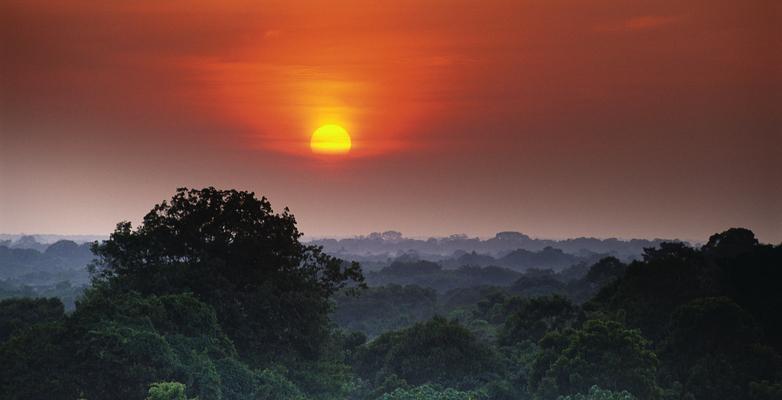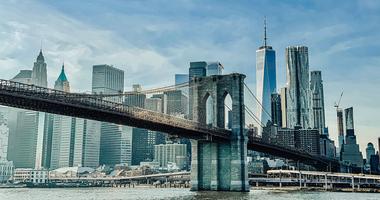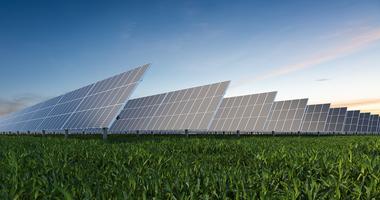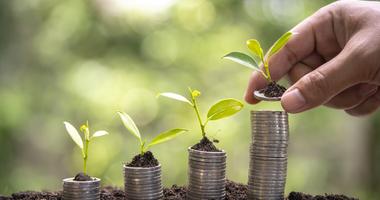
Environmental Defenders in the Amazon
Indigenous leaders serve as frontline defenders of human rights, protecting the environment and promoting sustainable development in their communities.
6 min read
By Karen Anahí Bailón, CEE Fellow
The Amazon Rainforest, spanning over 6.7 million square kilometers (about twice the area of India), is a critical global ecosystem of unparalleled biodiversity and climate stabilization.
“Not only does the Amazon encompass the single largest remaining tropical rainforests in the world, it also houses at least 10% of the world’s known biodiversity, including endemic and endangered flora and fauna, and its river accounts for 15-16% of the world’s total river discharge into the oceans,” according to WWF.
However, this natural treasure faces relentless threats from extractive industries, leading to a profound crisis for environmental and human rights defenders across Latin America.
As discussed in the Escazu Agreement, Indigenous leaders serve as frontline defenders of human rights, protecting the environment and promoting sustainable development in their communities.
Despite their efforts, they face systemic aggression and violence from Amazonian governments, worsening existing injustices and institutional failures. Yet, their comprehensive approach and long-term vision offer invaluable alternatives to address the socio-economic and environmental challenges facing the region.
In recent years, Latin America has seen a surge in violence against environmental and human rights defenders, with the Amazon being particularly susceptible. According to Global Witness in 2023, 88% of killings on defenders in 2022 were in Latin America, and 36% of all defenders killed were Indigenous peoples.
These attacks, often linked to resource exploitation and infrastructure projects disproportionately target Indigenous leaders and activists, worsening socio-environmental conflicts and perpetuating cycles of violence.
Indigenous women stand at the intersection of environmental defense, cultural preservation, and social justice. Their relationship with the land is deeply rooted in ancestral ties, where the territory serves as the foundation of their existence.
They defend the land not only for its ecological significance but also for its role in ensuring food security, safeguarding health, protecting our climate, preserving culture, and nurturing spiritual connections.
One exemplary group embodying the resilience and determination of Indigenous people is the collective known as "Mujeres Amazónicas (Amazonian Women)." Comprising over 100 women, who are mainly Indigenous, from diverse nationalities in the Ecuadorian Amazon, these women have been at the forefront of environmental activism and cultural preservation. Their journey began amidst the Indigenous uprisings of the 1990s, where they saw the courage of their parents and communities in demanding recognition of their rights.
The collective of Amazonian women is diverse, including leaders, environmental and human rights defenders, activists, and more, standing up for various Indigenous peoples and nationalities of the Amazon. Each of them navigates unique realities in their daily lives, yet they are bound by a shared commitment to defend their lands and communities.
They are united by a common purpose: to uphold the basic human right to a healthy environment. Many start with smaller actions, championing local causes within their communities, before rising to leadership roles in social organizations and Indigenous councils.
Despite facing many obstacles, hundreds of Indigenous women made a pivotal decision to step out of their traditional roles and amplify their voices. In 2018, the collective marched to Puyoon International Women's Day, and several days later a group spent several days in Quito, the capital of Ecuador, calling on the president to listen to their proposals.
This was an act of bravery and determination, demanding to be heard and respected. Once in the capital, they shared with the government the Mandate from Amazonian Women Grassroots Defenders of the Rainforest Against the Extractive Economic Model – a declaration where Amazonian women reject extractive industry in their territories, as well as the end of gender violence against Indigenous women.
With the support of Amnesty International and Amazon Watch, they shared “over 250,000 signatures to the General Attorney of Ecuador, demanding an ‘effective’ investigation due to recent attacks and threats against women defenders of the Amazon, as well as the end of state concessions to oil, logging, and mining companies in our territories.”
However, their calls for action were met with insufficient attention and indifference from authorities, hindering their fight for environmental justice and human rights, which has been further complicated by corruption, pollution, and governmental apathy.
The formation of organizations such as the Association of Waorani Women of the Ecuadorian Amazon (AMWAE) and the Amazonian Women's Collective have been instrumental in the defense of the Amazon. These groups are a rebellion against oppression and exploitation, uniting women in the struggle for a sustainable and fair future for their communities.
Through their leadership and resistance, these women are challenging historical injustices and forging a path towards environmental and social justice. Their ability to organize and mobilize, both locally and internationally, serves as a powerful tool for demanding respect for their rights and protecting the legacy of the Amazon for future generations.
It is crucial to recognize and support the efforts of Amazonian women in their fight for justice and dignity. Their voices and visions are indispensable for ensuring a sustainable and fair future for all, where the Amazon and its inhabitants can thrive in harmony with nature.
Alicia Cahuiya, a Waorani leader and founder and president of the AMWAE, is a prime example of the resilience and determination of Amazonian women. Cahuiya experienced firsthand the intimidation and violence perpetrated by her husband and other men in her community, fueled by the influx of extractive industries like oil companies. This prompted Cahuiya and other Indigenous women to seek support and ask what they could do to stop this?
The men in their community worked, but the earnings were often diverted elsewhere, leaving families like Cahuiya’s unable to guarantee food security, access to health care, or other basic rights. In response, she and other Waorani women who shared similar experiences began organizing.
Cahuiya founded a group crafting souvenirs to sell to improve the economic stability of women in her community.
Indigenous communities, like Cahuiya’s Waorani population, once had everything they needed to thrive in the rainforest, from food to medicine to recreation. However, the arrival of the oil industry disrupted this dynamic, contaminating the land and water and making it impossible for them to farm or cultivate food.
As a result, they were forced into a capitalist way of life to buy first-needed products due to the contamination and loss of access to natural resources. For the people in the Amazon, this leads to a precarious way of life, as an estimated 36% of Amazonian populations live in poverty.
Driven by the necessity to seek income, Indigenous communities are increasingly displaced and become climate refugees due to environmental degradation and pollution caused by extractive industries.
For decades, there has been a significant displacement process among Indigenous peoples in the Amazon, often caused by deforestation and extractive activities that result in the loss of their ancestral lands and violence.
In response to these challenges, Cahuiya and many other Indigenous women organize against oil extraction in the Amazon Rainforest, hoping to ensure that their children experience the rainforest in its best condition.
Their political organization is not about creating a name for themselves – it is about recognizing themselves as political subjects, realizing their voices' value, and demanding that the government consider them.
Thus, they embark on a local and international struggle, confronting reports warning of the Amazon's decline, potentially turning it into a savanna in the future. Moreover, they are concerned about reports indicating that the rainforest may cease to exist as it's known today by 2025 due to continued deforestation. This underscores how the current economic development model in Ecuador is at odds with life, the environment, and humanity.
Therefore, it is crucial for Amazonian women, alongside the rest of the population, to organize politically not only to assert their rights or raise their voices but also to demand that governments guarantee basic rights like access to water, food security, or education. This is an undeclared war, without weapons, that women wage from their territories, marked by casualties and enormous losses, yet often overlooked by broader society.




